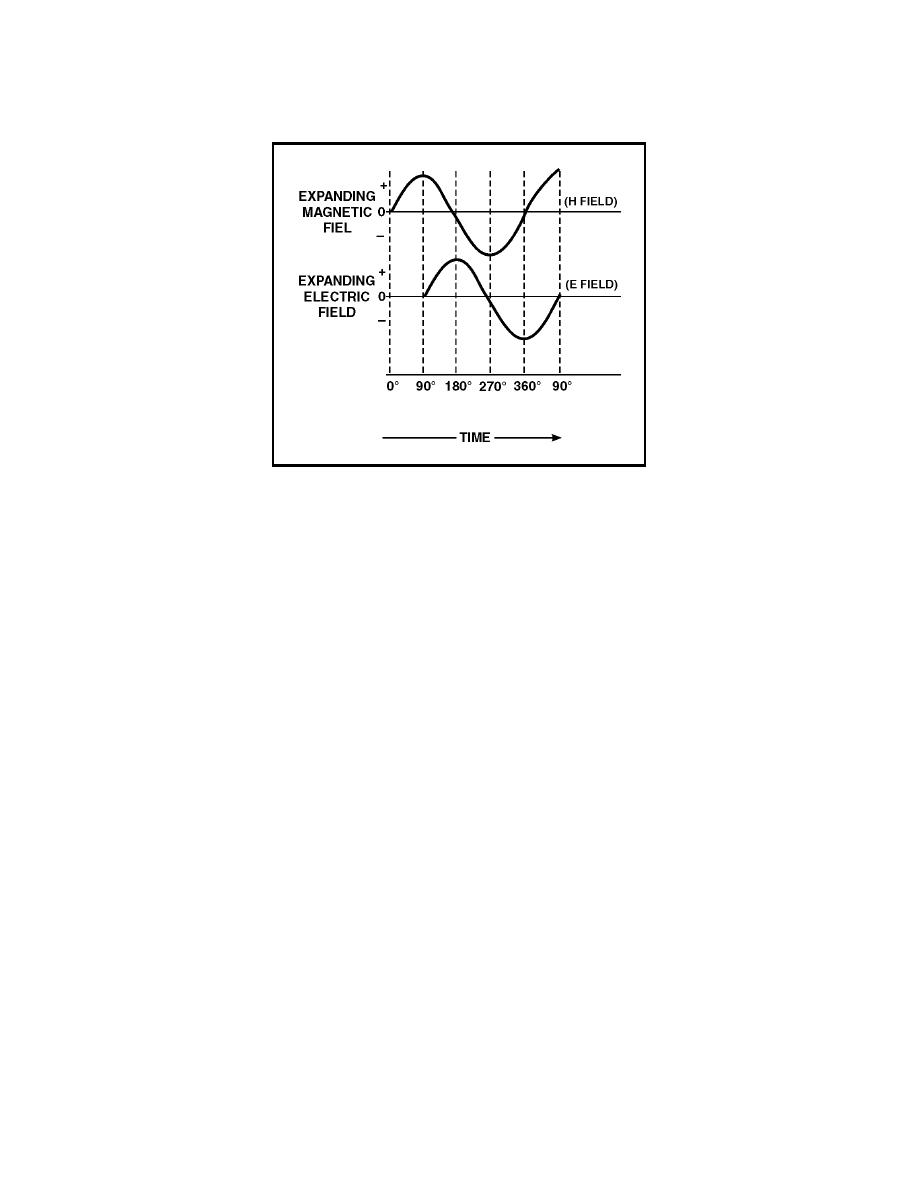
TC 9-64 _________________________________________________________________________
Figure 2-2. Phase Relationship of Induction Field Components
2-8. All the energy supplied to the induction field is returned to the antenna
by the collapsing E and H fields. No energy from the induction field is
radiated from the antenna. Therefore, the induction field is considered a local
field and plays no part in the transmission of electromagnetic energy. The
induction field represents only the stored energy in the antenna and is
responsible only for the resonant effects that the antenna reflects to the
2-9. The E and H fields that are set up in the transfer of energy through
space are known collectively as the radiation field. This radiation field is
responsible for electromagnetic radiation from the antenna. The radiation
field decreases as the distance from the antenna is increased. Because the
decrease is linear, the radiation field reaches great distances from the
antenna.
2-10. Let us look at a half-wave antenna to illustrate how this radiation
actually takes place. Simply stated, a half-wave antenna is one that has an
electrical length equal to half the wavelength of the signal being transmitted.
Assume, for example, that a transmitter is operating at 30 megahertz. If a
half-wave antenna is used with the transmitter, the antenna's electrical
length would have to be at least 16 feet long. (The formula used to compute
the electrical length of an antenna is explained in chapter 4.) When power is
delivered to the half-wave antenna, both an induction field and a radiation
field are set up by the fluctuating energy. At the antenna, the intensities of
these fields are proportional to the amount of power delivered to the antenna
from a source such as a transmitter. At a short distance from the antenna
and beyond, only the radiation field exists. This radiation field is made up of
an electric component and a magnetic component at right angles to each
other in space and varying together in intensity.
2-4



 Previous Page
Previous Page
